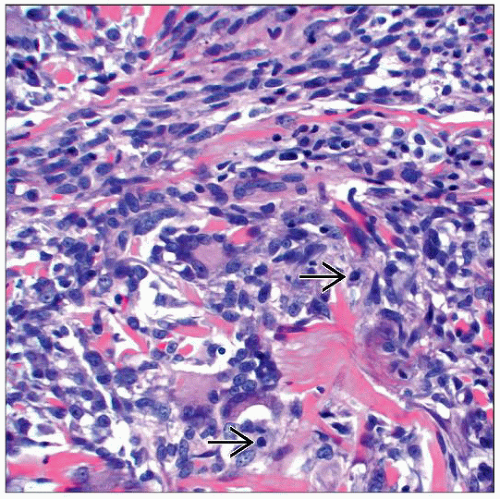Porocarcinoma
David Cassarino, MD, PhD
Key Facts
Etiology/Pathogenesis
May arise from malignant transformation of longstanding poroma
Clinical Issues
Rare tumors; approximately 200 cases reported
Usually occur in elderly patients
Acral surfaces most common
Significant rate of metastasis (up to 50%)
Microscopic Pathology
Epidermal-based atypical adnexal tumor with anastomosing cords of tumor cells
Most cases are invasive, but some may be in situ (porocarcinoma in situ)
Cells are usually basaloid but may show clear cell, squamoid, or spindle cell features
Mitotic figures are usually numerous and may be atypical
TERMINOLOGY
Synonyms
Malignant poroma
Definitions
Malignant adnexal tumor with ductal differentiation that may arise in a poroma
ETIOLOGY/PATHOGENESIS









